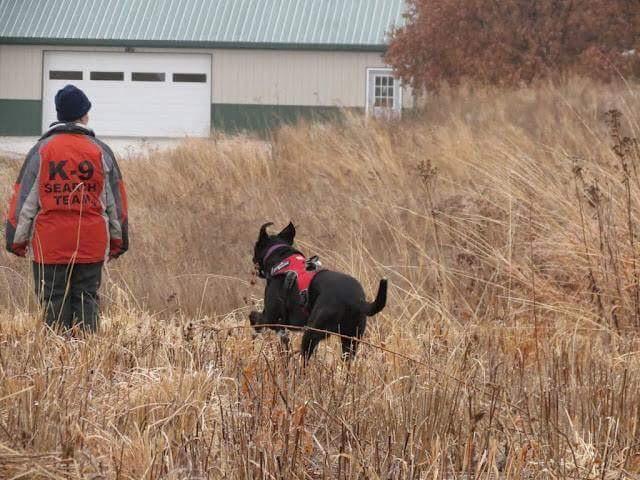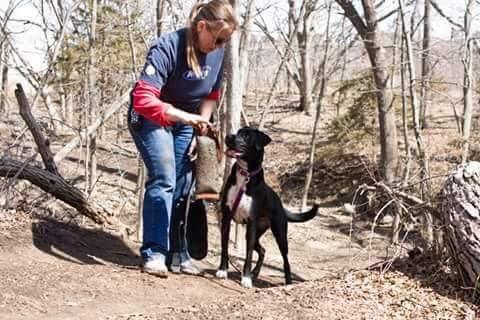
Types of Working Dogs
Education
About a year ago I wrote a quick article for a dog blog as a guest writer (who would ask me of all people to do such a thing? I'm a horrible writer, yikes!). When I was revisiting content for our page I really thought that this simplified quick piece may be appropriate for the kennel to share since we receive so many questions about Clara and our other dogs and what they do.
A quick note: This article is geared specifically at US based readers. Service dog/animal laws are different from country to country, so if you are reading this and live elsewhere please make a note that your countries rules and regulations may vary from these and while I know many different areas rules there really isn't a good way to smash in international working dog law to this article.
Working Dog
Hello y'all! We are so happy to have been given the chance to guest post over here. My name is Kelly and I am so excited to be able to talk to you all about working dogs. I am one of the lead trainers at Sundog Training and while we work with all owners to help create a better team relationship with your dog we have a true and very deep passion for training and placing working dogs. Part of this passion is because we have seen what these dogs can do in our personal lives and what it is like to need assistance when it can be so hard to find.
There are basically four categories of working dogs and while the names or terms can be different around the world the same basic principles apply. They are service animals, emotional support animals (ESAs), therapy dogs, and search and rescue (SAR) dogs. These working categories can then be split into to sections - those that assist their owner/handler and those that assist others. We will discuss those that assist a single individual first.



Service Animals
A service animal is a dog or miniature horse that is task trained to mitigate a handler’s disability (in the United States). These animals are not registered or certified, they must meet the training requirements and behavior standards outlined in the ADA. To make it a little more relatable, Clara is my service dog. She assists me by preforming a task to make sure I stay safe and healthy. Tasks are commands or training that a dog can do either on command or when a situation triggers it. Some of Clara’s tasks are medical alerts, finding assistance and my car, disrupting behaviors, and many more. Because of this I am allowed to take her with me to work and most public places (churches and sterile environments are the two most prominent exceptions).
ESAs
The second type of dog that assists a set individual is an ESA (emotional support animal). An ESA can be any animal prescribed by a healthcare provider to better the health and wellbeing of their client. While many people have dogs as ESAs it can technically be any animal that is legal in your area. These handlers have no public access rights with their animals - they may be present in the home, visit pet friendly locations, and can travel on commercial airlines if they qualify and abide by the requirements of the ACAA. These animals do not need to be task trained but they can significantly affect and better the life of the individuals they live with.
Therapy Dogs
Now we are on the second category: dogs that assist others. The first of these types is the therapy dog. These animals are certified and monitored by an agency such as Therapy Dogs International. These amazing dogs are trained and tested to visit others and interact with them in a way that will help alleviate stress or improve an individual’s wellbeing. Most commonly these dogs are seen in hospitals, libraries, and school - but every day, they are doing more in our communities and helping millions of individuals all over the world. On their off time they are just like your favorite pet - they play, goof off and, sleep on the bed. These animals can only visit the locations that they are assigned to or places that they are allowed as pets in their off time. Their handlers have no additional public access rights with them.

Search & Rescue
The last, but one of the most amazing types of working dogs are search and rescue (SAR) dogs. These dogs are trained to find specific individuals in high stress and remote locations. They specialize in different search parameters - urban, wilderness, disaster, live search, and HRD (human remains detection). In their down time these are high energy pets, but these teams never stop giving back. They do training and trials to keep up their standards, are constantly adding new scenarios to their wheelhouse, and are always working to improve their organizations and clubs. These dogs are all privately owned, live with their handlers, but teams are interviewed, recognized and, trained with organizations around the world.



This is just a small summary of what these dogs do and who they are. This is by no means all inclusive, but a great little reference and starting place. We hope you enjoyed learning about working dogs and if you have any questions we encourage you to reach out to us. We regularly update our website with new laws, regulations and info. We are also compiling a resource center in order to share more training and care information with anyone looking to learn. Thank you all for letting us talk to you and especially to Cute Dog Addicts! We are so happy to have found you and can’t wait to see your blog and pages grow.
Originally posted the Cute Dog Addicts 3/10/18
